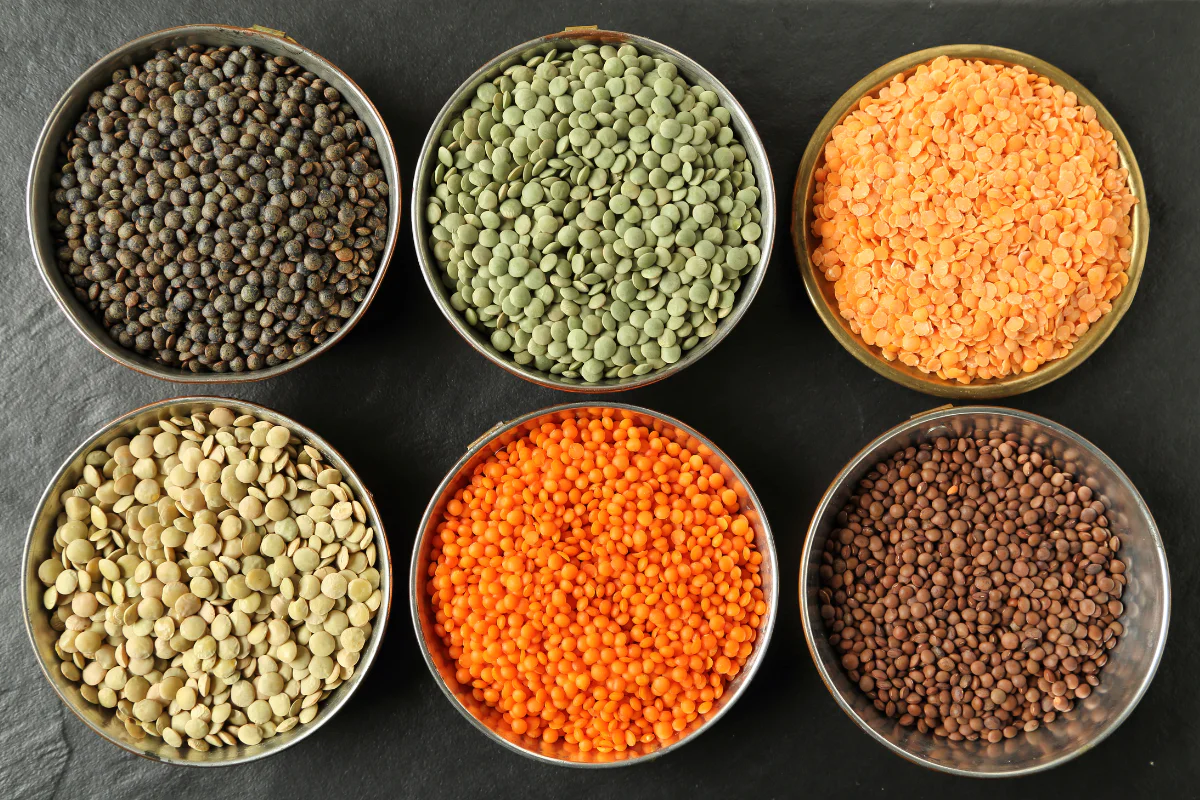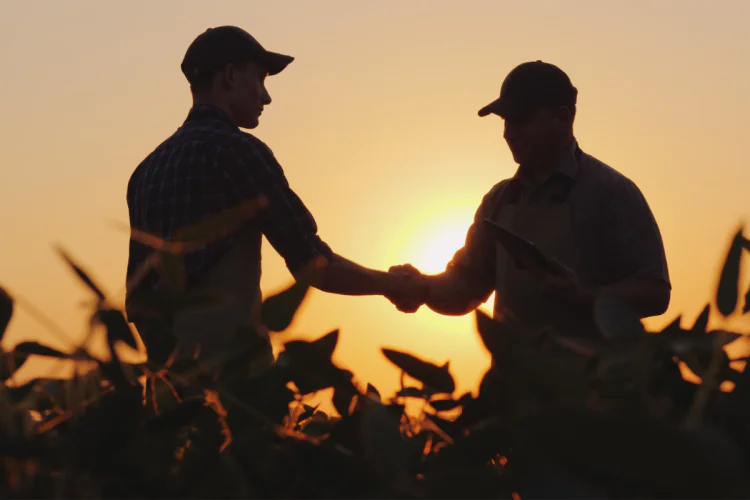Navigating CUSMA: What grain and pulse exporters need to know

Tariff pressures in 2025
While the Canada-United States-Mexico Agreement (CUSMA) helps Canadian exporters of grain and pulses, such as wheat, lentils and peas, maintain access to the U.S. and Mexican markets, trade tensions continue to affect the sector.
On April 2, 2025, the U.S. by Executive Order issued by President Donald Trump imposed new tariffs ranging from 10% to 25% on certain imports into the U.S. that do not qualify as “originating” under CUSMA. For exporters of grain and/or pulses to the U.S., the resulting consequences of this Executive Order are that non-CUSMA compliant exports will be subject to a 25% tariff.
For Canadian exporters, this new development highlights the importance of ensuring that exports are properly documented and qualify for preferential treatment under CUSMA. Failure to comply could result in significant additional costs and impact long-term trade and business relationships.
Agriculture under CUSMA
CUSMA came into force on July 1, 2020, replacing the North American Free Trade Agreement (NAFTA). CUSMA covers trade relations among the three countries and impacts a broad range of sectors, including agriculture. For Canadian exporters of grains and pulses such as wheat, lentils and peas, understanding the implications of CUSMA is vital to preserving market access and minimizing risk.
Chapter 3 of CUSMA outlines the agreement’s agricultural provisions, including the elimination of export subsidies[1] and the promotion of transparency.[2] CUSMA includes specific annexes on agricultural trade between Canada and the U.S. (Annex 3-A) and between Mexico and the U.S. (Annex 3-B).[3]
Although CUSMA groups most agricultural goods together, there are commodity-specific provisions that Canadian exporters should be aware of that aim to prevent discriminatory practices and support fair market competition. For Canadian exporters, understanding these commodity-specific details is important, because documentation and logistics can impact border clearance and market access. Both grains and pulses are included in the definition of “agricultural goods” used in CUSMA,[4] as imported from the Agreement on Agriculture.
Article 3.A.4 under Annex 3-A of CUSMA provides specific guidance on the importation and exportation of wheat into the U.S. Under this Article, wheat that is imported from Canada into the U.S. must be accorded at least as favourable treatment as the U.S. accords domestic wheat with respect to assigning quality grades. A country of origin statement is not required on a quality grade certificate for originating wheat imported from Canada.[5] Additionally, Canadian exporters of wheat must exclude from Canada’s Maximum Grain Revenue Entitlement, established under the Canada Transportation Act, agricultural goods originating in Canada and shipped via west coast ports for consumption in the U.S.[6]
Under Article 3.4, the U.S., Canada and Mexico are restricted from adopting or maintaining an export subsidy on agricultural goods, including grains and pulses, destined for one of the signatory countries.[7] Therefore, whether grains and pulses exported from Canada fall within the definition of “agricultural goods” is important for confirming whether the products will remain exempt from tariffs.
Rules of origin: What counts as Canadian?
To qualify for CUSMA’s preferential tariff treatment, agricultural products must meet CUSMA’s rules of origin. For grains or pulses, one avenue is for these products is to be considered “wholly obtained or produced entirely in the territory of Canada, the US, or Mexico,” meaning they are “grown, cultivated, harvested, picked, or gathered in Canada, the US, or Mexico.”[8]
However, complexities can be found when dealing with blended goods or shared supply chains, which are common in agribusiness. As the Trade Commissioner of the Government of Canada notes, determining origin can be complicated, and customs brokers and import experts with Canadian Border Services are useful resources. Final determination of a good’s treatment upon entering the U.S. is ultimately determined by the U.S. Customs and Border Protection.
Under CUSMA, any certificate of origin used by an exporter to base a claim for preferential treatment must include the following information, at minimum, per Annex 5-A:
- Certification of Origin: Identify whether the certifying party is an exporter, producer or importer
- Certifier: The certifier’s name, title, address (including country), telephone number and email address[9]
- Exporter: The exporter’s name, address (including country), email address and telephone number if different from the certifier; the exporter’s address must be the place of export of the good, in Canada, the U.S. or Mexico[10]
- Producer: The producer’s name, address (including country), email address and telephone number if different from the certifier or exporter. If there are multiple producers, this must be stated as “various,” or if this information is to remain confidential, the declaration may state it is “available upon request by the importing authorities.” A producer’s address must be the place of production of the good in Canada, the U.S. or Mexico.[11]
- Importer: If known, the importer’s name, email address, telephone number and address, which must be in the territory of a CUSMA party (Canada, U.S. or Mexico)[12]
- Description & HS tariff classification: A description of the good and its HS tariff classification to the six-digit level, sufficient to relate it to the good covered by the certification. If the certification of origin covers a single shipment of a good, it must indicate, if known, the invoice number related to the exportation.[13]
- Origin criteria: The origin criteria under Article 4.2 under which the good qualifies[14]
- Blanket period: The blanket period, up to 12 months, the certification covers if multiple shipments of identical goods are made per Article 5.2[15]
- Authorized signature of certifier, date and certifying statement: The certification of origin must be signed and dated by the certifier and accompanied by a prescribed statement confirming the goods qualify as originating and the document is true and accurate.[16]
The certificate of origin can be included on commercial documents like invoices and does not have to follow a prescribed format, provided that it contains the minimum data set out above and in Annex 5-A.[17] CUSMA also imposes record keeping requirements on importers and exporters regarding certificates of origin and other documentation where preferential tariff treatment has been claimed for imported goods.
Ensuring compliance and engaging customs brokers
Compliance under CUSMA also goes beyond certification. Exporters must align sourcing and production practices with origin rules and ensure documentation is complete and accurate. Many businesses rely on customs brokers to navigate these requirements, but the exporter remains responsible for ensuring compliance.
The Canadian Trade Commissioner Service offers compliance tools and resources, including origin calculators, checklists and guides, that can help businesses verify whether their products meet CUSMA requirements. Using these resources effectively can streamline the export process and build internal knowledge.
Customs brokers play a critical role in CUSMA compliance, especially for exporters unfamiliar with international trade documentation. Brokers can help ensure that tariff classifications, valuation and certificates of origin are accurate and meet the legal standards. However, Customs Brokers should be seen as partners and not substitutes for internal due diligence. Exporters should maintain active communication with their Customs Brokers and routinely review the information submitted on their behalf.
Key takeaways for exporters
CUSMA provides ongoing duty-free access for Canadian grains and pulses, provided origin requirements are met. Exporters must ensure they comply with rules of origin and maintain appropriate documentation.
- Customs brokers play a vital role in ensuring compliance, but ultimate compliance responsibility remains with the exporter.
- Additional tariffs imposed by the U.S. reinforce the need for a proactive, strategic approach to trade compliance.
- Leveraging tools from the Trade Commissioner Service and Canada Border Services Agency can streamline compliance.
Looking ahead
Canadian grain and pulse exporters should treat CUSMA as both a legal framework and a business opportunity. Staying current with compliance requirements and using available government resources can help maintain competitive advantage and avoid costly trade disruptions. As the global trade landscape changes, so must compliance strategies.
Adding legal and trade professionals into your export planning process can minimize risk. Investing in compliance today can set the foundation for sustainable growth in international markets, even when working with complex and changing geopolitical forces.
For assistance with understanding CUSMA, your compliance obligations or trade-related legal questions, contact one of the authors or visit the Legal Beacon resource centre. The Legal Beacon provides additional resources to address specific needs relating to trade and tariffs.
Note: This article is of a general nature only and is not exhaustive of all possible legal rights or remedies. In addition, laws may change over time and should be interpreted only in the context of particular circumstances such that these materials are not intended to be relied upon or taken as legal advice or opinion. Readers should consult a legal professional for specific advice in any particular situation.
[1] CUSMA Article 3.4
[2] CUSMA Article 3.10
[3] CUSMA Article 3.11
[4] CUSMA Article 3.1
[5] CUSMA, Annex 3.A.4, Annex 3-A
[6] CUSMA Annex 3.A.4
[7] CUSMA Article 3.4
[8] CUSMA Article 4.3(b)
[9] CUSMA Annex 5-A s 2
[10] CUSMA Annex 5-A s 3
[11] CUSMA Annex 5-A s 4
[12] CUSMA Annex 5-A s 5
[13] CUSMA Annex 5-A s 6
[14] CUSMA Annex 5-A s 7
[15] CUSMA Annex 5-A s 8
[16] CUSMA Annex 5-A s 9
[17] CUSMA Art 5.2 s 3






